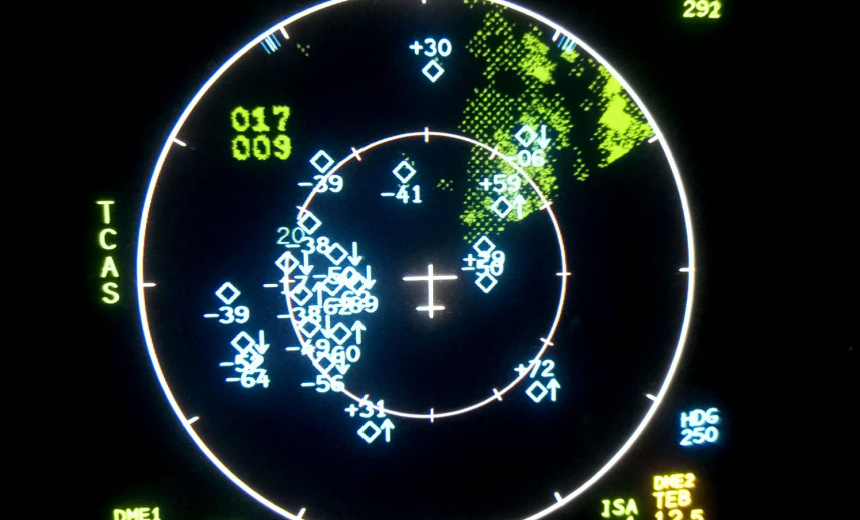Governance & Risk Management
,
Operational Technology (OT)
Hackers Unlikley to Exploit Flaws in The Wild

Security researchers found an unpatchable flaw in the system that prevents commercial aircraft from crashing into each other, the U.S. federal government said in a Tuesday advisory that called the likelihood of its exploitation “unlikely” outside of a laboratory setting.
See Also: ESG Report: Analyzing the Economic Benefits of Palo Alto Networks Industrial OT Security
The flaw is one of two disclosed by the Cybersecurity and Infrastructure that affect the Traffic Alert and Collision Avoidance System II system. The vulnerabilities affect TCAS II versions 7.1 and prior.
The first vulnerability, tracked as CVE-2024-9310, stems from reliance on untrusted inputs in security decisions.
Attackers using software-defined radios could transmit spoofed radio frequency signals with false location data, causing fake aircraft to appear on cockpit displays.
“By utilizing software-defined radios and a custom low-latency processing pipeline, RF signals with spoofed location data can be transmitted to aircraft targets, “CISA said.
This vulnerability holds a CVSS score of 6.0 and requires highly specific conditions for exploitation. There is no mitigation for it.
The second flaw, tracked as CVE-2024-11166, involves external control of system configurations in TCAS II systems relying on outdated transponder standards.
Exploiting this vulnerability allows attackers to impersonate ground stations and disable resolution advisories – recommended vertical maneuverers for collision avoidance – by setting sensitivity level control to the lowest, leading to a denial-of-service condition.
The vulnerability carries a CVSS score of 7.1.
CISA said that while no public exploitation of these vulnerabilities is reported, organizations should mitigate CVE-2024-11166 by upgrading to the next-generation collision avoidance system known as ACAS X, or to transponders compliant with RTCA DO-181F, the document containing minimum operational performance standards for TCAS II.
